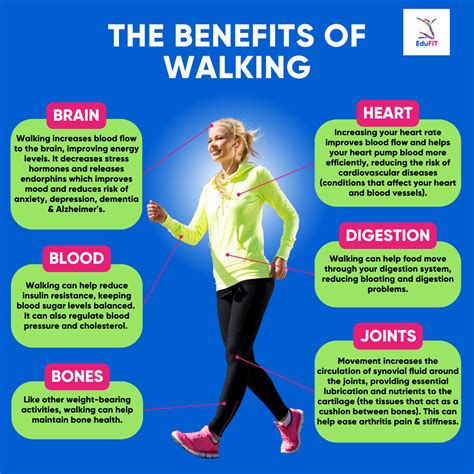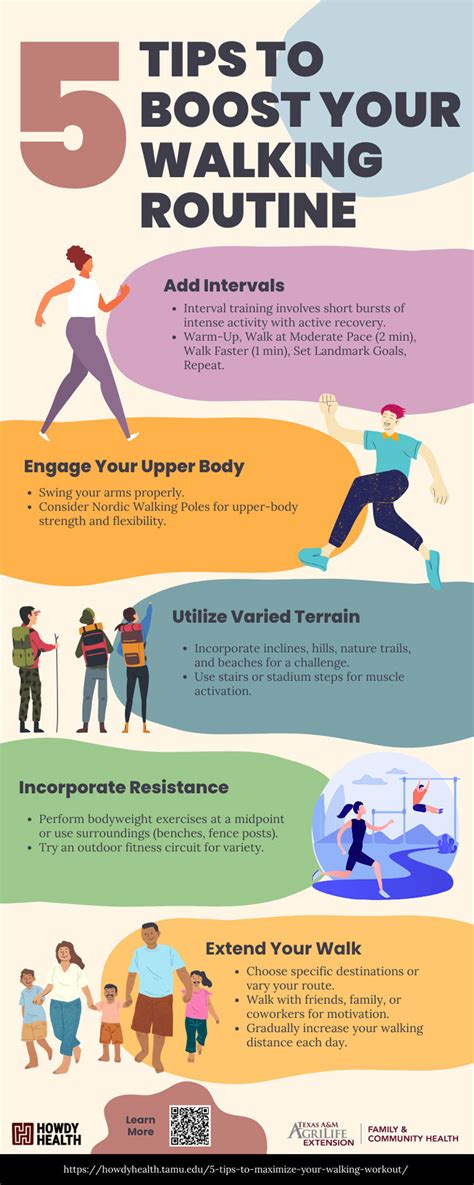Intro
Boost health with daily 30-minute walks. Discover 7 easy ways to incorporate walking into your routine, improving fitness, reducing stress, and increasing energy with regular physical activity and exercise habits.
Walking is one of the simplest and most effective ways to improve overall health and wellbeing. With busy schedules and increasingly sedentary lifestyles, finding time to exercise can be challenging. However, incorporating a daily 30-minute walk into your routine can have a significant impact on both physical and mental health. Regular walking can help reduce the risk of chronic diseases, such as heart disease and diabetes, while also improving mood and energy levels. In this article, we will explore the importance of walking and provide practical tips on how to incorporate a 30-minute walk into your daily routine.
The benefits of walking are numerous and well-documented. Regular walking can help improve cardiovascular health by strengthening the heart and lungs, while also increasing blood flow and reducing blood pressure. Walking can also aid in weight management, improve sleep quality, and boost immune function. Furthermore, walking is a low-impact exercise that can be modified to suit different fitness levels, making it an accessible form of exercise for people of all ages. Whether you're looking to improve your physical health or simply reduce stress and improve your mood, incorporating a daily walk into your routine can have a significant impact on overall wellbeing.
Incorporating a daily 30-minute walk into your routine can seem daunting, especially with busy schedules and competing demands on your time. However, with a little creativity and planning, it's easier than you think. By identifying opportunities to walk throughout the day, such as during your lunch break or after dinner, you can easily incorporate a 30-minute walk into your daily routine. Additionally, finding a walking buddy or joining a walking group can provide motivation and accountability, helping you to stick to your walking routine. In the following sections, we will explore practical tips and strategies for incorporating a daily 30-minute walk into your routine.
Benefits of Walking

Physical Health Benefits
The physical health benefits of walking are numerous and well-documented. Regular walking can help improve cardiovascular health by strengthening the heart and lungs, while also increasing blood flow and reducing blood pressure. Walking can also aid in weight management, improve sleep quality, and boost immune function. Additionally, walking can help reduce the risk of chronic diseases, such as heart disease and diabetes. By incorporating a daily 30-minute walk into your routine, you can significantly improve your physical health and reduce the risk of chronic diseases.Mental Health Benefits
In addition to the physical health benefits, walking can also have a significant impact on mental health. Regular walking can help reduce stress and anxiety, improve mood, and boost energy levels. Walking can also provide an opportunity for mindfulness and meditation, helping to clear the mind and reduce stress. Furthermore, walking can provide a sense of accomplishment and pride, helping to boost self-esteem and confidence. Whether you're looking to improve your physical health or simply reduce stress and improve your mood, incorporating a daily walk into your routine can have a significant impact on overall wellbeing.How to Incorporate a 30-Minute Walk into Your Routine

- Schedule your walk into your daily planner or calendar, just as you would any other appointment.
- Find a walking buddy or join a walking group to provide motivation and accountability.
- Identify opportunities to walk throughout the day, such as during your lunch break or after dinner.
- Incorporate walking into your daily commute, such as walking to work or school.
- Try to walk at the same time every day, so it becomes a habit.
Overcoming Barriers to Walking
Despite the numerous benefits of walking, there are often barriers that prevent people from incorporating a daily walk into their routine. Common barriers to walking include lack of time, lack of motivation, and lack of access to safe walking areas. However, with a little creativity and planning, these barriers can be overcome. Here are some strategies for overcoming common barriers to walking:- Find a walking buddy or join a walking group to provide motivation and accountability.
- Identify safe walking areas in your neighborhood or community.
- Incorporate walking into your daily routine, such as during your lunch break or after dinner.
- Try to walk at the same time every day, so it becomes a habit.
Practical Tips for Walking

- Wear comfortable shoes and clothing that allow for a full range of motion.
- Stay hydrated by drinking plenty of water before, during, and after your walk.
- Try to walk at a brisk pace, so you can get your heart rate up and improve cardiovascular health.
- Incorporate strength training exercises into your walking routine, such as walking uphill or carrying hand weights.
- Try to walk in a variety of environments, such as on trails or in parks, to keep your walking routine interesting and prevent boredom.
Walking Safety Tips
While walking is a relatively safe form of exercise, there are several safety tips that you should follow to minimize your risk of injury. Here are some safety tips for walking:- Always wear reflective clothing or carry a flashlight when walking in low light conditions.
- Stay alert and aware of your surroundings, so you can avoid potential hazards such as cars or bicycles.
- Try to walk with a buddy or join a walking group, so you can provide support and assistance in case of an emergency.
- Stay hydrated by drinking plenty of water before, during, and after your walk.
- Try to walk in well-lit and populated areas, such as parks or sidewalks, to minimize your risk of injury.
Conclusion and Next Steps

We invite you to share your experiences and tips for incorporating a daily walk into your routine. How do you stay motivated and accountable? What are some of your favorite walking routes or tips for staying safe while walking? Share your thoughts and comments below, and let's work together to promote the numerous benefits of walking.
What are the benefits of walking?
+Walking can have numerous benefits, including improved cardiovascular health, weight management, and improved sleep quality. Walking can also help reduce stress and anxiety, improve mood, and boost energy levels.
How can I incorporate a 30-minute walk into my daily routine?
+To incorporate a 30-minute walk into your daily routine, try scheduling your walk into your daily planner or calendar, finding a walking buddy or joining a walking group, and identifying opportunities to walk throughout the day, such as during your lunch break or after dinner.
What are some safety tips for walking?
+Some safety tips for walking include wearing reflective clothing or carrying a flashlight when walking in low light conditions, staying alert and aware of your surroundings, and trying to walk in well-lit and populated areas, such as parks or sidewalks.
